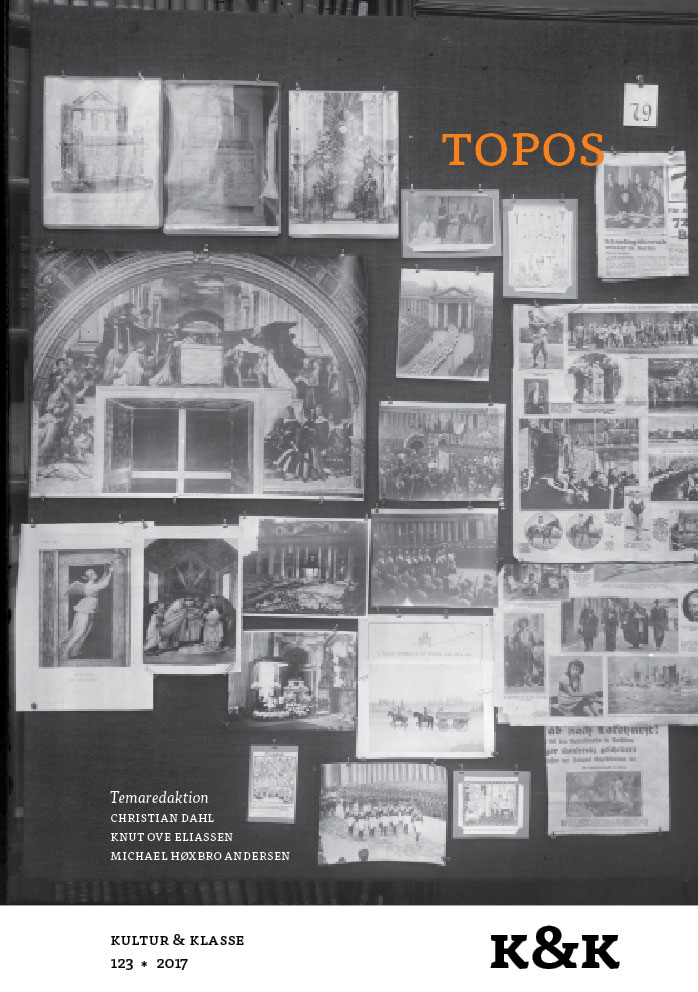“It was a sweet view – sweet to the eye and the mind.” Jane Austen og det pittoreske landskab
DOI:
https://doi.org/10.7146/kok.v45i123.96911Nøgleord:
Jane Austen, landskabshave, karakterdannelse, topos, locus amoenus, pastorale, pittoresk, ’improvement’, naturfølelse, sceneri, metonymi, metafor, Humphrey ReptonResumé
It is obvious in Jane Austen’s novels that she was interested in the ongoing debate of ’the picturesque garden’, and in all her novels the characters are discussing how to look at the landscape, how to ‘improve’ the estates according to certain rules, and how taste and moral are connected to each other. The picturesque garden is inspired by paintings from the 17th century by Claude Lorraine and Nicolas Poussin, and in that way a clear line can be drawn back to Theocritus and Virgil, who introduced topoi as ‘locus amoenus’ and the ‘pastoral’. This article is examining how the relation is between these topoi, which are ideal landscapes that only exist in literature and painting, and the discussions of the design of real physical landscapes of contemporary England. It is difficult to decide on which side Austen was in the discussions of the picturesque. The article concludes that Austen’s voice is to be heard in the narrative, the development of the characters, and that she ends up with an attempt to reach an authentic relationship with landscape and nature that foreshadows a romantic feeling of nature. An appendix shows the later reception of Austen’s relationship to landscape, by analyzing a scene from modern films based on Jane Austen’s novels.
Referencer
Austen, Jane. Emma. Oxford: Oxford University Press, 2003.
Austen, Jane. Mansfield Park. Oxford: Oxford University Press, 2008.
Austen, Jane. Northanger Abbey. London: Wordsworth Editions Limited, 2000.
Austen, Jane. Persuasion. Oxford: Oxford University Press, 2004.
Austen, Jane. Pride and Prejudice. London: Wordsworth Editions Limited, 2007.
Austen, Jane. Sense and Sensibility. Oxford: Oxford University Press, 2004.
Batey, Mavis. Jane Austen and the English Landscape. London: Barn Elms Publishing, 1990.
Bodenheimer, Rosemarie. “Looking at the Landscape in Jane Austen.” In Studies in English Literature, 1500-1900, Vol. 21, No. 4 (1981): 605-623.
Curtius, Ernst Robert. European Literature and the Latin Middle Ages. Oversat fra Europäische Literatur und lateinisches Mittelalter (1948), New York and Evanston: Harper & Row, 1953.
Duckworth, Alistair M. “Landscape.” In Todd, Janet, ed. Jane Austen in Context, Cambridge: Cambridge University Press, 2005: 278-288.
Esmann, Karin. ”Lysthuset. Haven som formidler af det indre rum”. In K&K 90, 28. årgang nr. 2 (2000): 113-129.
Esmann, Karin. ”Landskabshavens tableauer”, In Tableau. Det sublime øjeblik, Elin Andersen og Karen Klitgaard Povlsen, ed. Århus: Klim, 2001. 117-141.
Esmann, Karin. ”Parts answ’ring parts, shall slide into a Whole. Betydningsdannelse i havekunsten”. In K&K 96, 31. årgang nr. 2 (2003): 76-91.
Hunt, John Dixon and Peter Willis. The Genius of the Place. The English Landscape Garden 1620-1820. Cambridge, Massachusetts, London, England: MIT Press, 1988.
Hunt, John Dixon. The Picturesque Garden in Europe. London: Thames & Hudson, 2002.
Lane, Maggie. Jane Austen’s England. London: Robert Hale Limited, 1986.
Moore, Charles W., William J. Mitchell and William Turnbull, Jr. The Poetics of Gardens, Massachusetts: MIt Press, 1997.
Morini, Massimilliano. Jane Austen’s Narrative Techniques. A Stylistic and pragmatic Analysis. Farnham: Ashgate, 2009.
Pope, Alexander (1731). ”Epistle to Lord Burlington.” In Hunt, John Dixon and Peter Willis. The Genius of the Place. The English Landscape Garden 1620-1820. Cambridge, Massachusetts, London, England: MIT Press, 1988.
Repton, Humphrey (1803). Observation on the theory and practice of landscape gardening. London: T. Bensley.
Rogers, Elizabeth Barlow. Landscape Design: A Cultural and Architectural History. New York: Harry N. Abrams, Inc., 2001.
Ross, Stephanie. “The Picturesque: An Eighteenth-Century Debate”. In The Journal of Aesthetics and Art Criticism Vol. 46, No. 2 (1987): 271-279.
Siddall, Stephen. Landscape and Literature. Cambridge: Cambridge University Press, 2009.
Spencer, Jane. “Narrative Technique: Austen and Her Contemporaries.” In Johnson, Claudia L. and Clara Tuite, ed. A Companion to Jane Austen. West Sussex: Blackwell Publishing Ltd, 2009. 185-195.
Sutherland, Kathryn. “Jane Austen on Screen”. In Copeland, Edward and Juliet McMaster, ed. The Cambridge Companion to Jane Austen, Cambridge: Cambridge University Press, 2011. 215-231.
Pride and Prejudice. Manuskript og instruktion: Andrew Davies, Simon Langton. 1995.
Lost in Austen. Manuskript og instruktion: Damien Timmer, Michele Buck. 2008.
http://www.gardenvisit.com/book/observations_on_the_theory_and_practice_of_landscape_gardening_1803/preface_containing_some_observations_on_taste/taste_and_pleasure (indlæst 01.09.16)
Downloads
Publiceret
Citation/Eksport
Nummer
Sektion
Licens
Tidsskriftet følger dansk ophavsret.





